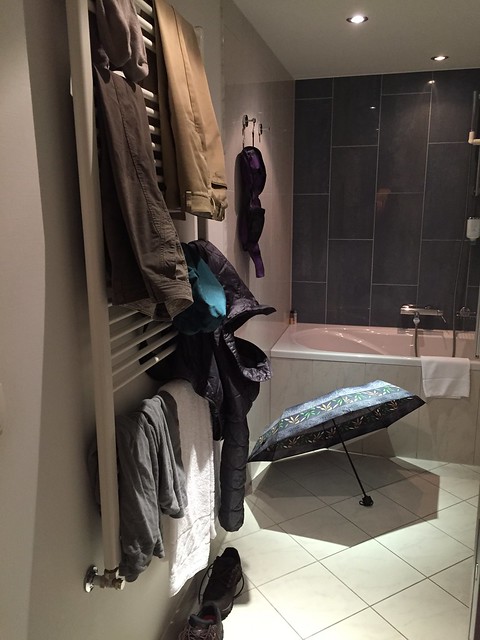The Benefits of a Dehumidifier
If your home suffers from a lot of moisture (which can lead to rot, damage furniture, attract pests and irritate allergies and asthma), a dehumidifier may help. They can be incorporated into your HVAC system or used as standalone units.
Humidity is a natural phenomenon caused by evaporation and condensation. A dehumidifier helps balance this cycle and improves your comfort, health and energy efficiency.
Reduces Moisture
A dehumidifier reduces the moisture in your home’s air to prevent condensation and other issues. This is particularly important in areas like the bathroom where steam and humidity can cause mold and mildew to form. Keeping humidity low also helps keep pests away, so your home is more comfortable and safe to be in.
Humid conditions can affect all parts of the house and create a host of problems. For example, in damp rooms metals may rust and wood can warp. Some items in the house are highly sensitive to humidity including books, photographs and even clothing. Using a dehumidifier in these rooms can help them stay in good condition and last longer.
Many dehumidifiers use a refrigerant such as freon (or its more environmentally friendly modern counterparts) to pull moisture from the air. They work much the same as an air conditioner does. Refrigerant cycles between expanding and contracting to cool down coils inside the unit and pull moisture from the air around them.
Most portable dehumidifiers have a hole in the case that electric fan allows you to connect a hose to it. You then run the hose to a drain to remove the collected moisture from the unit. Some larger, whole-house dehumidifiers are tied into your home’s plumbing so that the extracted water can be deposited directly into your plumbing system.
Reduces Allergens
A dehumidifier can greatly reduce the number of allergens in the air, such as mold, mildew and dust mites. These are common triggers of allergies and asthma, especially in those living in humid climates.
Allergens such as these thrive in moist environments and produce spores that can irritate healthy sinuses, lungs and nasal passages, leading to congestion, sneezing and itchy eyes. In addition, high levels of allergens in the air can also contribute to a variety of chronic health issues, including bronchitis and eczema.
An important consideration when considering using a dehumidifier for allergy relief is to be sure the unit has an air filter that is designed specifically to remove allergens from the air. A dehumidifier without an air filter will reduce humidity and hinder allergen growth but won’t trap airborne allergens suspended in the air. For those suffering from severe allergies, a dehumidifier with an air filter is essential for reducing allergens in the home.
The ideal indoor humidity level for those with allergies is between 30 and 50 percent. This level of moisture discourages the growth of allergy-causing mold, mildew and dust mites and minimizes allergic reactions. Excessive humidity, however, can make breathing difficult and exacerbate allergies, so it is important to find a balance by regularly checking the relative humidity with a hygrometer.
Prevents Mold Growth
Mold spores can thrive in areas that are damp or have been exposed to water. Once the spores settle in, they can start growing on wood, fabric, and other materials. Mold spores also float in the air and can be a health hazard if inhaled for any length of time.
Mold growth is a problem because it’s unsightly, smells unpleasant, and can cause damage to the property. It’s especially problematic if someone suffers from asthma or allergies, as mold spores can trigger those problems.
A dehumidifier helps prevent mold from growing by removing excess moisture from the air. It does so without affecting the air temperature or making it too dry. Dehumidifiers can be used in rooms like basements, laundry rooms, bathrooms, and kitchens where humidity is high.
Mold grows best in areas where there’s excess water and warm conditions, such as leaky or flooded basements, steamy bathrooms and kitchens, and any places that have been affected by floodwaters. Mold spores can also be carried in by people and pets, so they can start growing wherever the conditions are electric fan wholesale right for it. A dehumidifier can help prevent mildew and mold from forming by keeping the air at an appropriate level of humidity. It’s worth noting that a dehumidifier cannot remove existing mildew or mold. If there’s already a problem, it will take steps to remove the water source and then address the issue of the spores in the air.
Saves Energy
Dehumidifiers consume electricity, and the amount of power they draw depends on the size and model of the appliance as well as environmental conditions (room temperature and humidity), the number of occupants in the home and typical wind speed in your area. However, most modern consumer dehumidifiers draw far less power than other appliances such as water heaters, washing machines and air conditioners.
In addition, a dehumidifier can actually save you energy, especially in the winter. Because excessive relative humidity can cause us to think that the temperature is warmer than it really is, keeping a dehumidifier running throughout the colder months may lead you to reach for your thermostat less frequently — saving energy.
If you want to maximize your dehumidifier’s energy efficiency, be sure to empty the water tank regularly, and to clean the coils of the device after each use. A dirty filter or coils can reduce your device’s efficiency, and they may also encourage the growth of mold and mildew. Also, be sure to keep your dehumidifier away from sources of dust and debris that can clog the air intake grille or evaporator coils. Lastly, when your dehumidifier is running, be sure to keep doors and windows closed as much as possible so that it can more efficiently remove moisture from the air.


